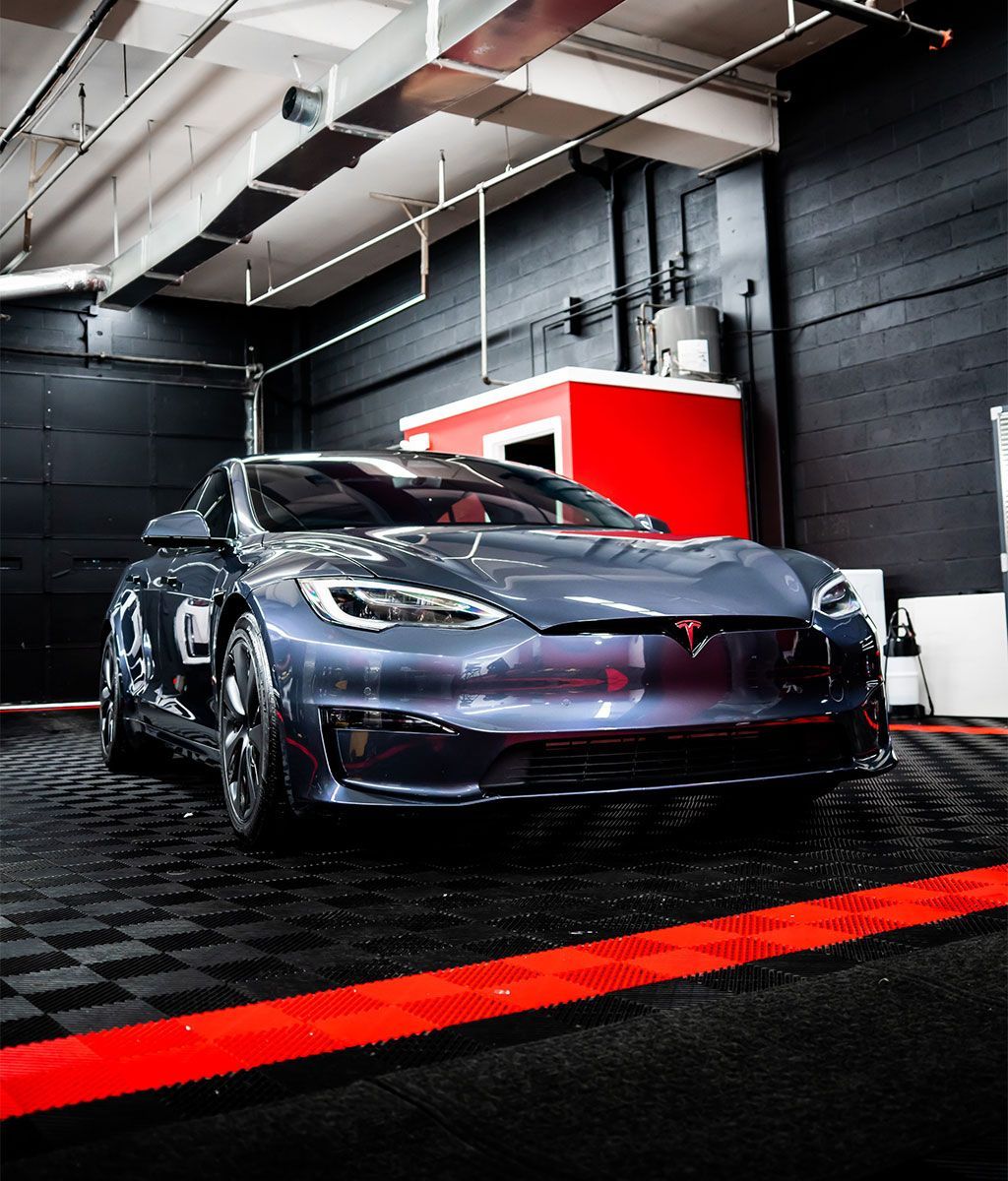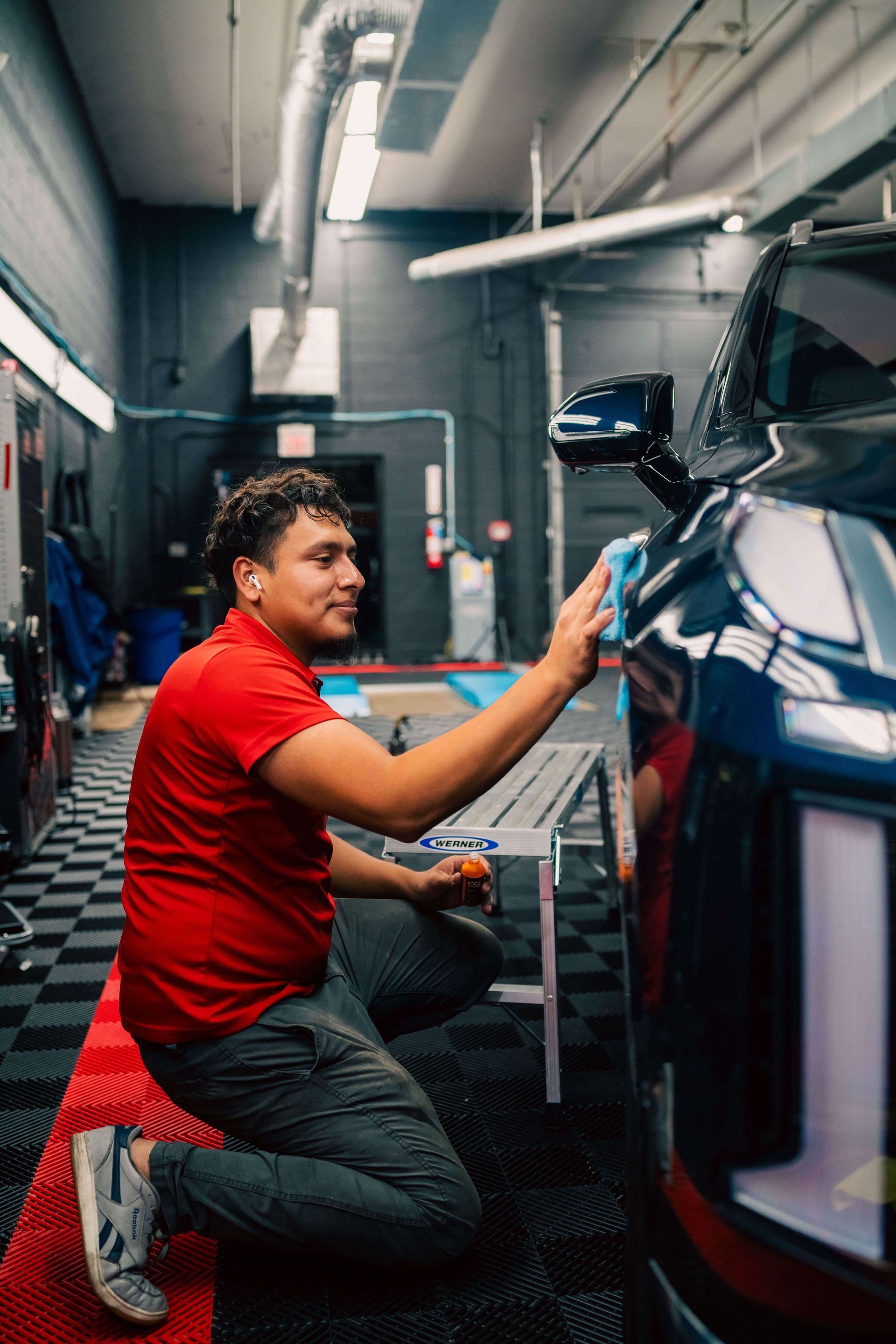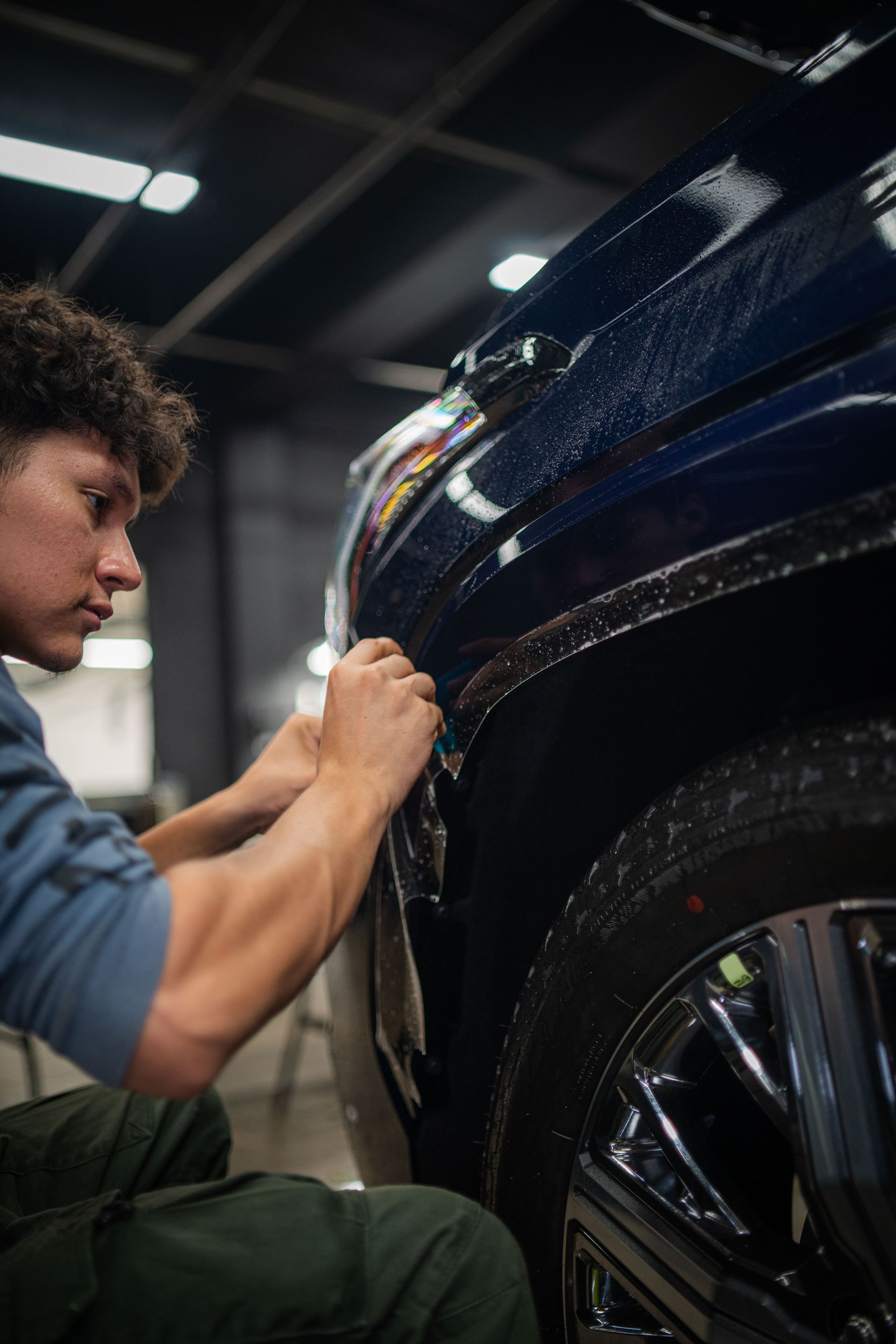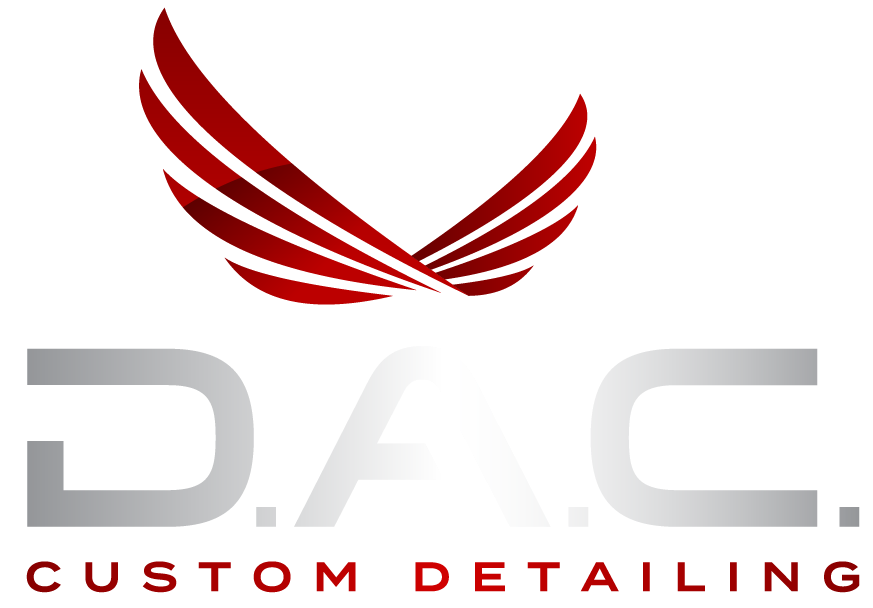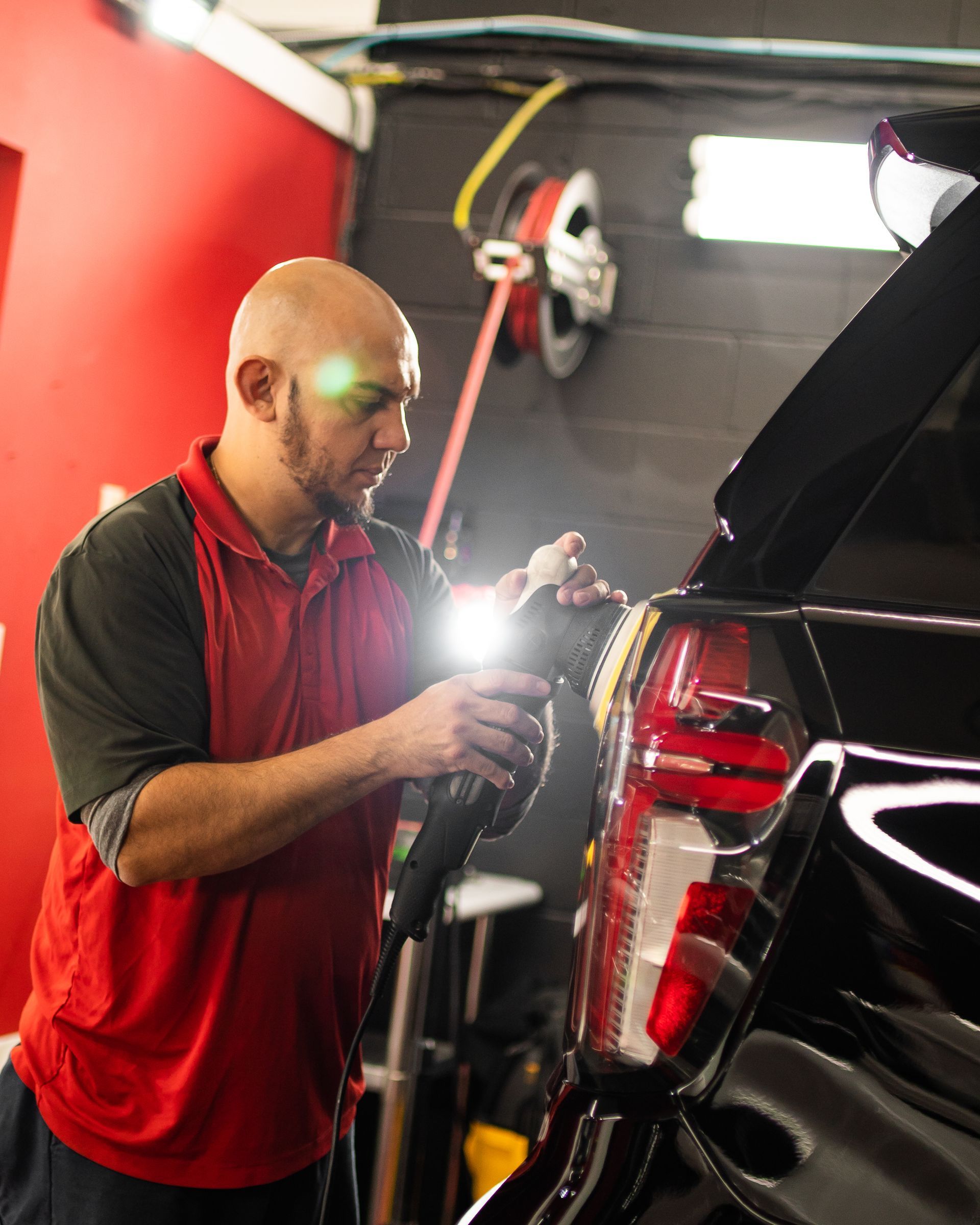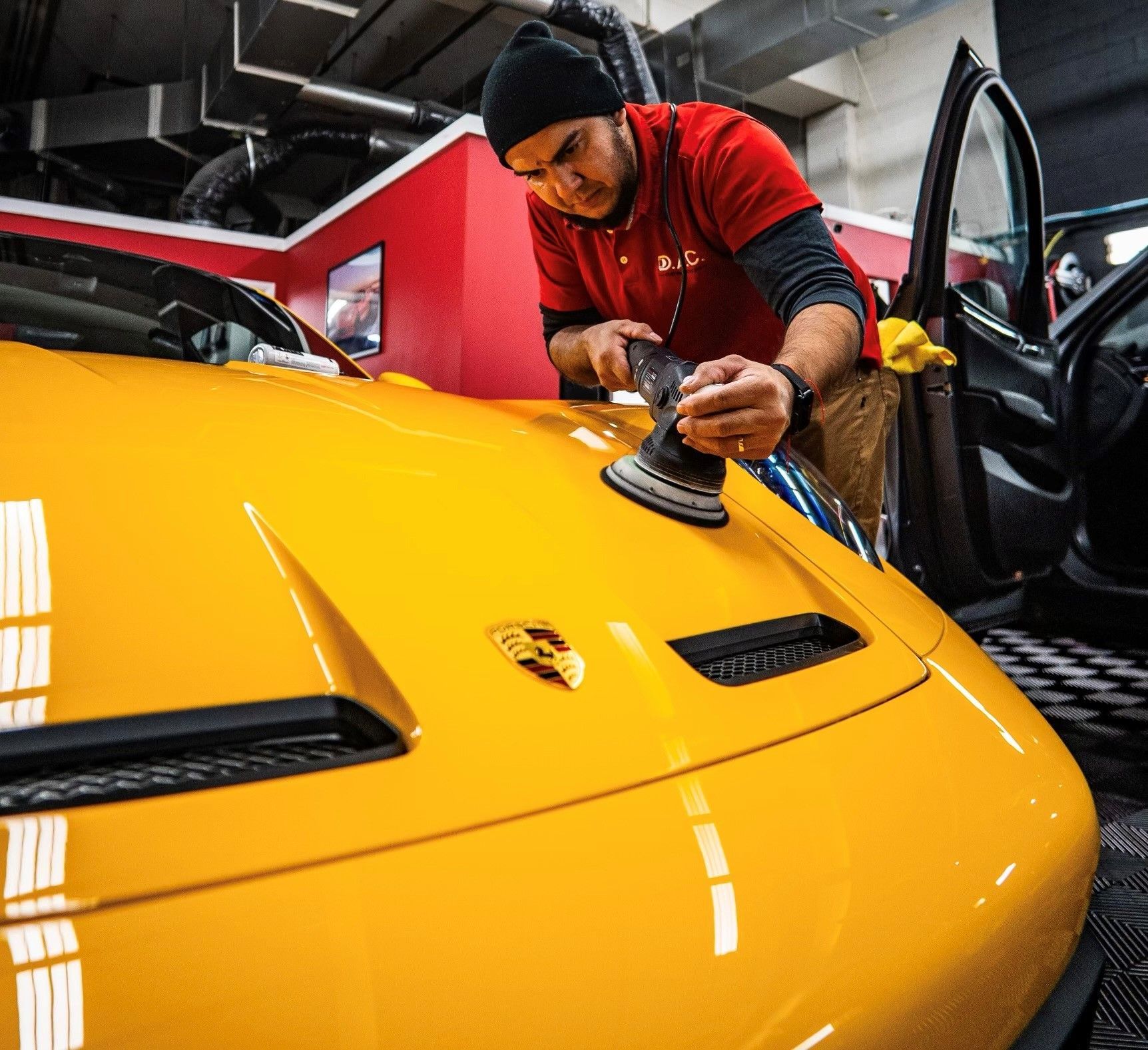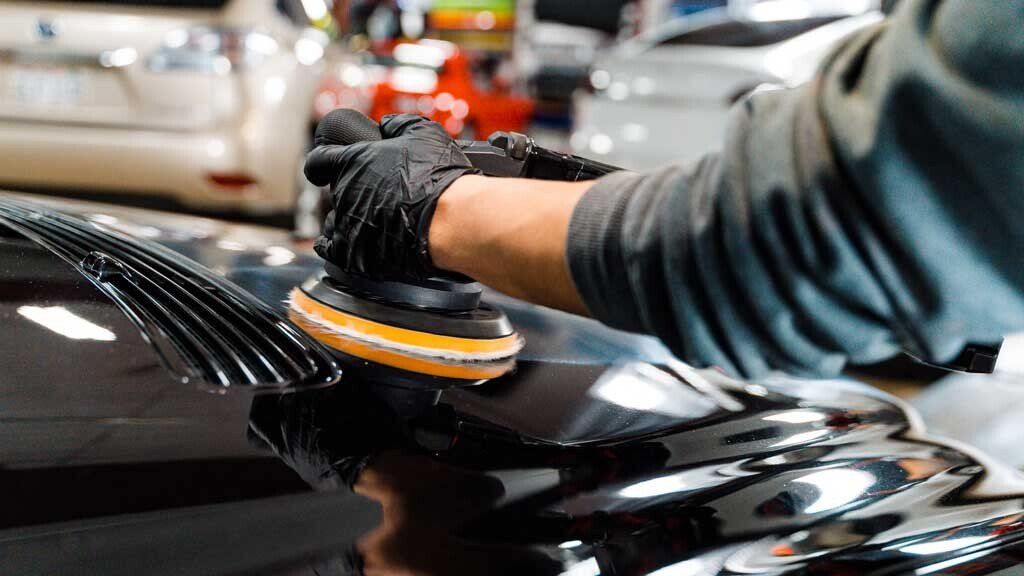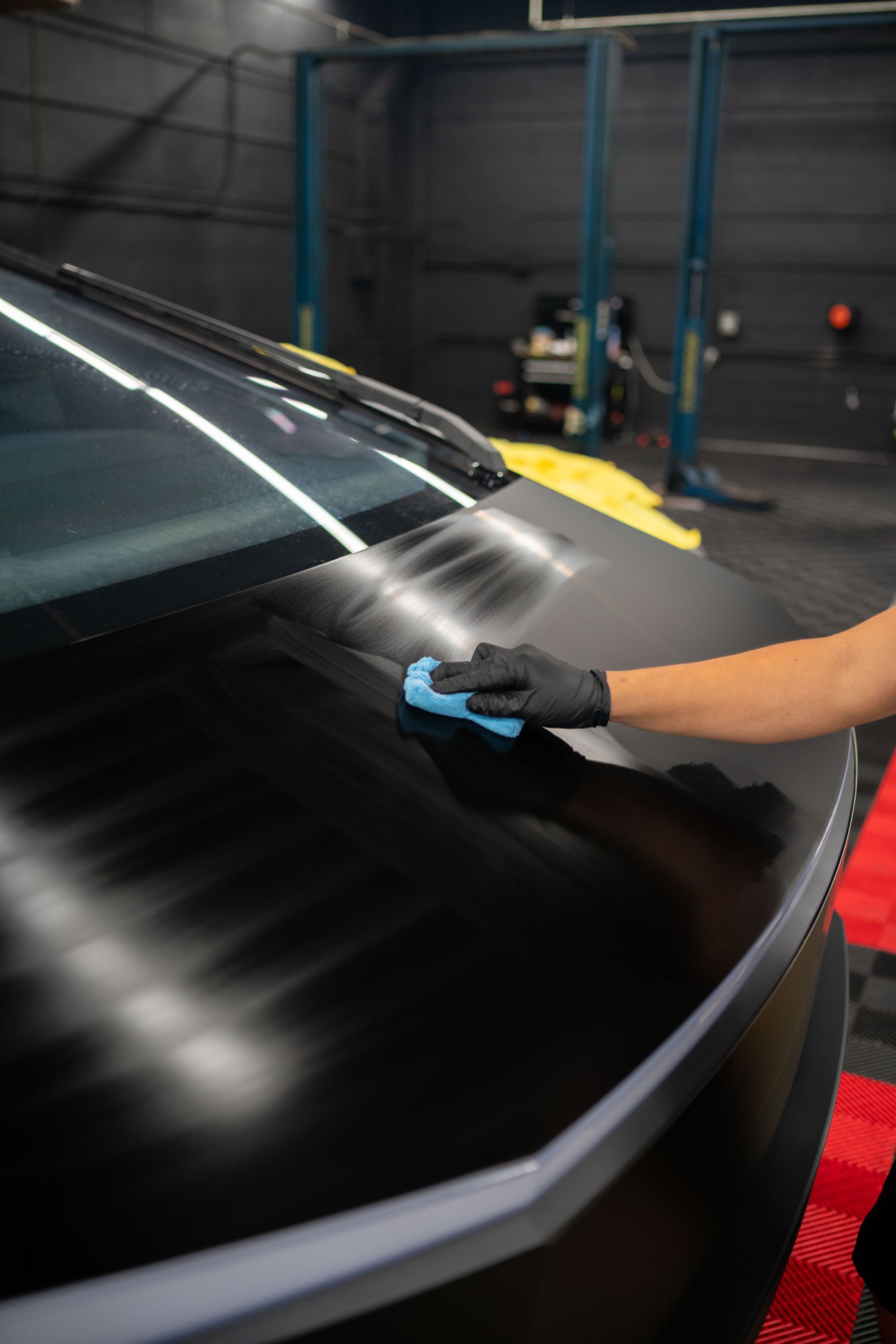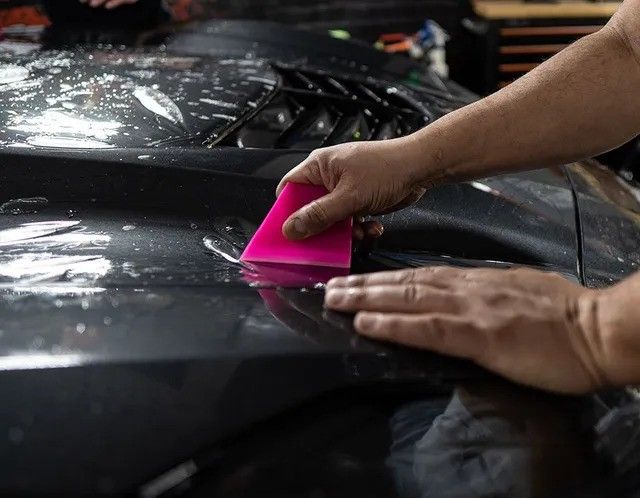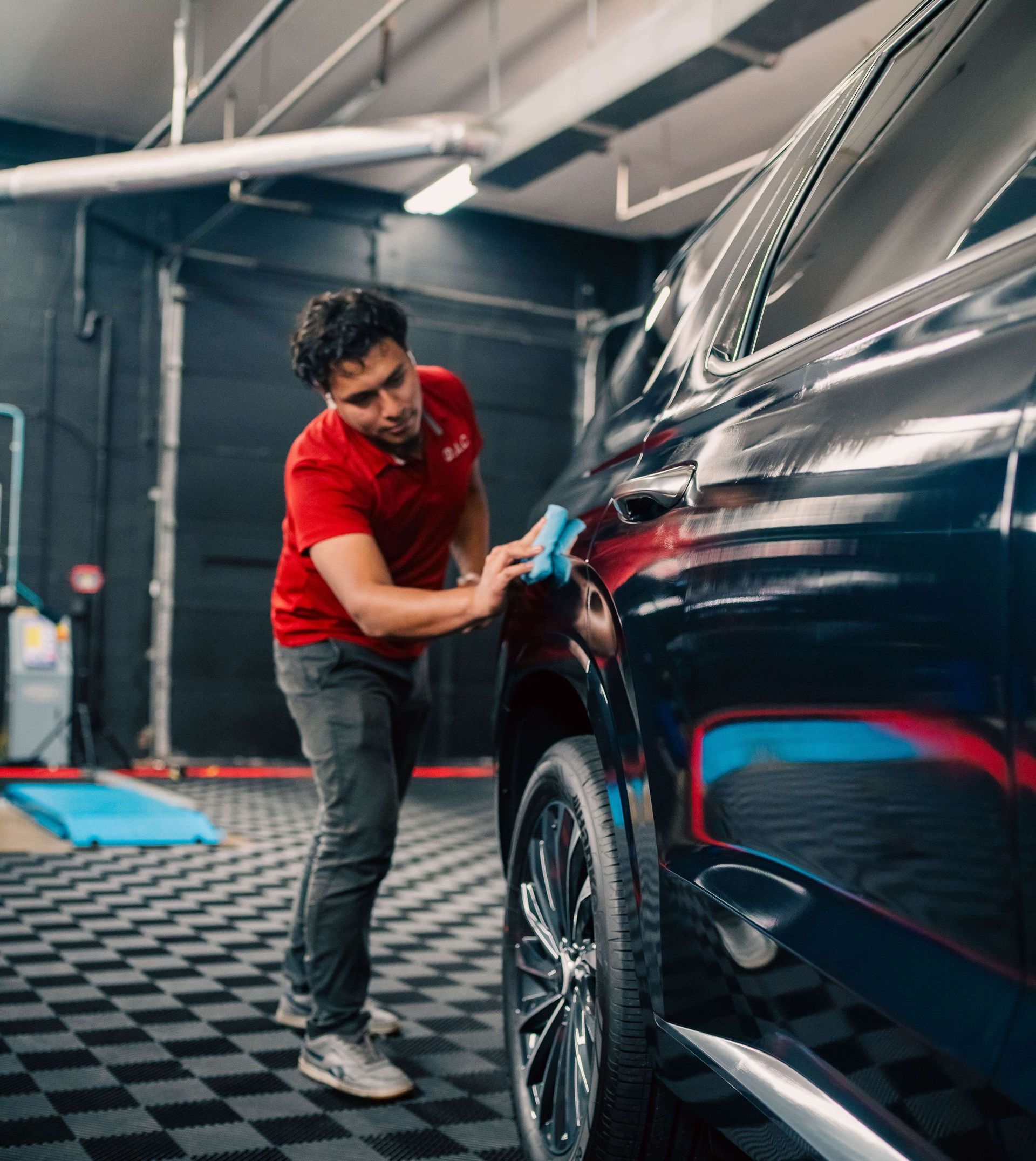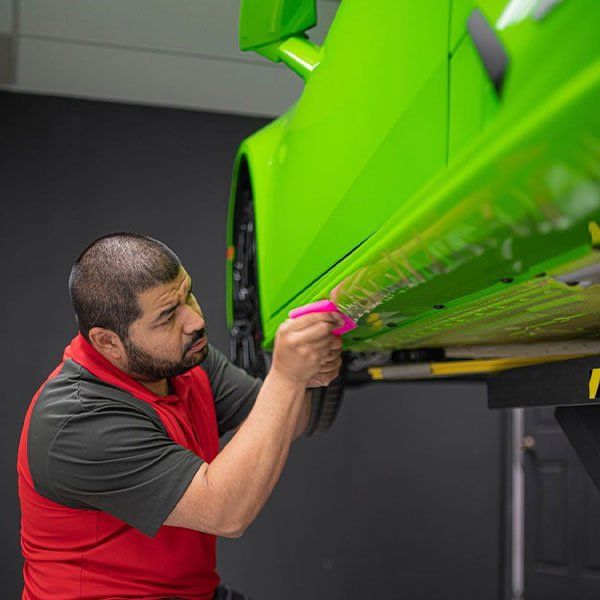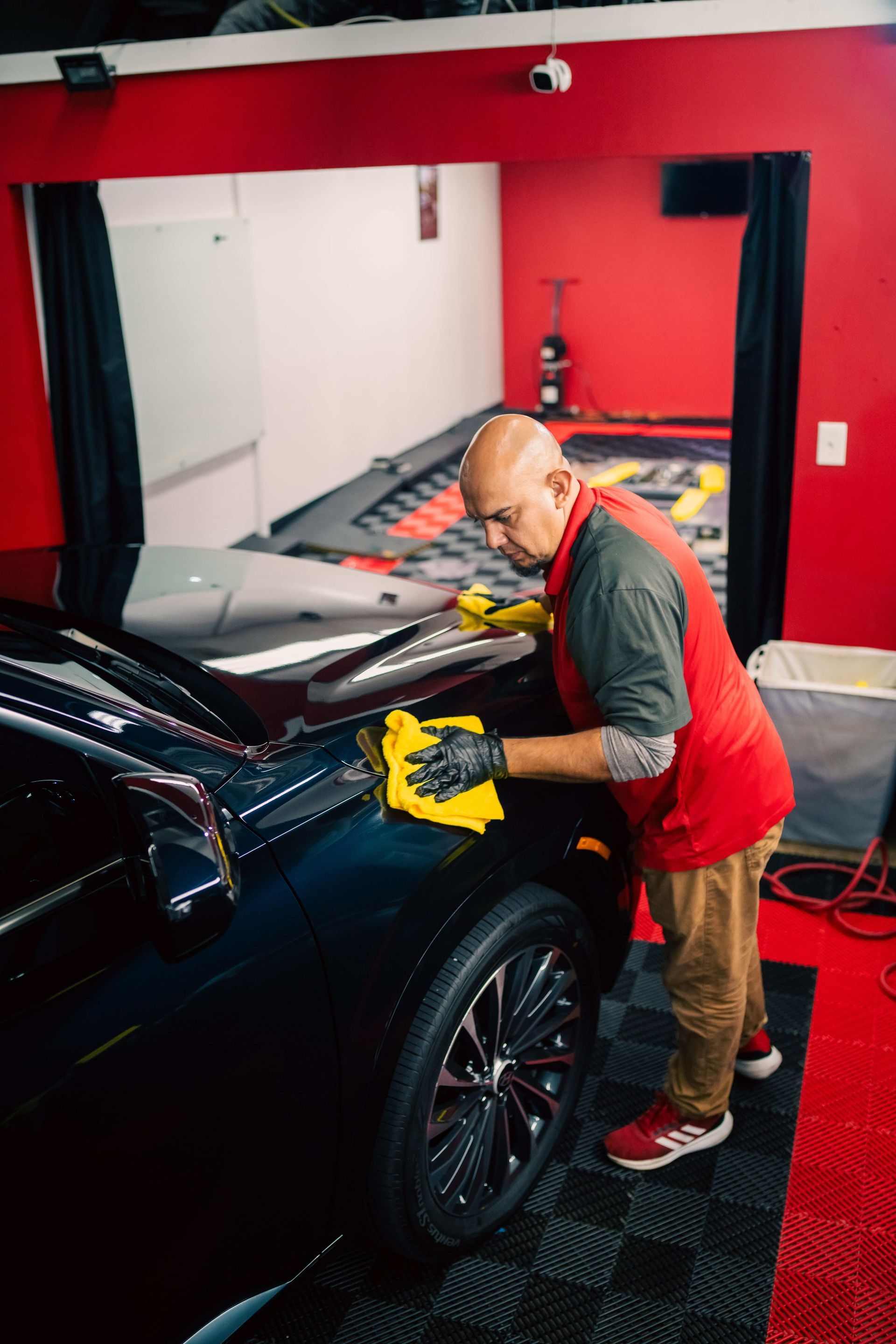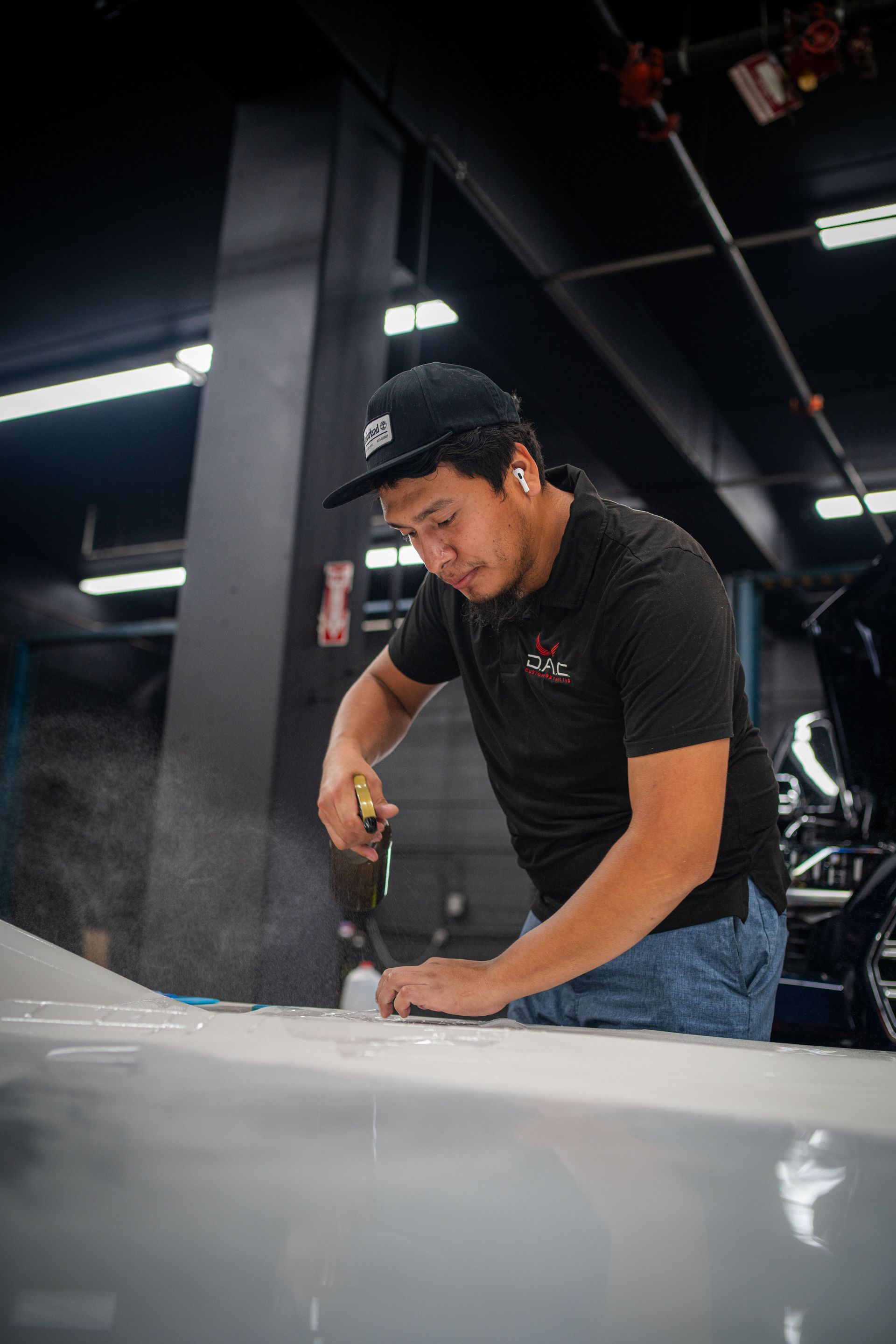REVIVE, PROTECT, MAINTAIN
Breathe life back into your timeless treasure! Restoring classic cars goes beyond a pet project; it’s an art, a passion, and, at times, a formidable challenge. Dullness or scratches on the car paint can dampen the vibrance of your prized possession. Welcome to the world of paint correction, which could be your golden ticket to reviving the lost glory of your classic car! In this blog post, we’ll give you a deep dive into professional techniques that take automotive aesthetics to new heights in ways that won't compromise their authentic appeal.
Paint correction for classic cars typically involves a meticulous process of assessing the paint's condition, carefully preparing the surface, and using specialized techniques such as polishing and compounding to remove imperfections like swirl marks and light scratches. A skilled professional will also apply protective coatings to enhance the car's appearance and preserve the restored paintwork. For specific product recommendations and techniques, it is advisable to consult with experienced auto detailing professionals who specialize in paint correction services.
Defining Paint Correction
To truly appreciate the benefits of paint correction for classic cars, it's important to first understand what paint correction is. Paint correction is a specialized technique used to restore the beauty and luster of a car's paintwork by removing imperfections such as swirl marks, light scratches, and other defects without the need for repainting. It rejuvenates the appearance of the vehicle, making it look like it just rolled off the showroom floor.
Over time, unavoidable wear and tear may take its toll on your vehicle’s paint. The presence of swirl marks from improper washing techniques or light scratches from abrasive materials can mar its once-pristine appearance. Paint correction is the solution that can bring back its former glory without resorting to expensive and unnecessary repainting. Paint correction involves carefully assessing the condition of the paintwork using specialized tools and knowledge. Skilled auto detailing professionals utilize different techniques, such as polishing, compounding, and wet sanding, to eliminate defects based on their severity.
Advantages of Paint Correction for Classic Cars
Classic cars are not just vehicles; they are treasured pieces of automotive history that embody craftsmanship and timeless design. Here are some notable advantages of paint correction for classic cars:
- Restoring Original Appearance: Throughout the years, a classic car's paint may lose its vibrancy due to exposure to sunlight, oxidation, or environmental contaminants. Paint correction brings back that deep gloss shine while eliminating imperfections and reviving the original color, allowing the car's true beauty to shine through.
- Preserving Paint with Protective Coatings: Paint correction typically involves the application of protective coatings, such as ceramic coatings or sealants. These coatings act as a barrier against UV rays, environmental pollutants, and minor scratches, helping to maintain the car's restored appearance for an extended period of time. They also make future maintenance and cleaning much easier.
- Adding Value to the Vehicle: A well-maintained and aesthetically pleasing classic car holds a higher value in the automotive market. By investing in professional paint correction, you can significantly increase its resale or appraisal value, making it an attractive option for potential buyers or collectors.
- Cost-Effective Alternative to Repainting: Repainting a classic car can be an expensive endeavor, often requiring significant time and money investment. Paint correction offers a less invasive and cost-effective solution, providing excellent results without the need for a full repaint.
- Saving Time and Effort Compared to DIY Methods: Properly performing paint correction on a classic car requires specialized tools, products, and techniques to achieve optimal results. Hiring a professional detailer saves you time, effort, and potential mistakes that could damage the vehicle's delicate paintwork.
Paint correction is a valuable investment that not only enhances the visual appeal of classic cars but also helps preserve their aesthetic integrity and value. However, it's essential to choose experienced professionals who understand the unique requirements of the paint restoration process.
Enhancing the Aesthetics of Classic Cars
Classic cars possess a timeless beauty that captivates enthusiasts and collectors alike. The restoration process is not merely about mechanical functionality but also focuses on enhancing the aesthetics to their former glory. Paint correction plays a crucial role in this endeavor, eliminating imperfections and transforming the appearance of these vehicles. Paint correction professionals employ their expertise to revive classic car paintwork by carefully assessing its condition and tailoring their approach accordingly. The process often involves various techniques such as polishing, compounding, and wet sanding to address specific issues like swirl marks, scratches, oxidation, or fading.
Polishing, usually done with rotary or dual-action polishers equipped with gentle foam pads, helps remove minor scratches and swirls from the surface. It requires patience and precision to carefully work the polisher over the paintwork, gradually revealing the original luster. Paint compounding comes into play when deeper scratches or defects require more aggressive treatment. Compounds with abrasive properties are used in conjunction with appropriate pads to level the surface by removing a thin layer of clearcoat or paint. It's a delicate balance between removing defects while preserving enough material for future protection.
Boosting Classic Car Value
Classic cars hold immense value for both automotive enthusiasts and collectors alike. Their uniqueness, rarity, and historical significance contribute to their allure and financial worth. Paint correction not only enhances their aesthetic appeal but also plays a vital role in boosting the value of these cherished automobiles. When prospective buyers or collectors assess a classic car for potential purchase, they closely inspect its exterior condition. The presence of swirl marks, scratches, or faded paint can significantly impact the perceived value and desirability of the vehicle. A professionally executed paint correction leaves a lasting impression and assures potential buyers that the car has been well-maintained and cared for.
Investing in paint correction demonstrates a commitment to preserving the originality and authenticity of the classic car. By restoring its paintwork to its former glory, owners effectively showcase their dedication to maintaining the vehicle's historical integrity. This attention to detail can add substantial value, making the car more attractive to buyers and collectors alike.
Preserving Paint Post-Correction
After investing time and effort into paint correction for your classic car, it is vital to implement practices that will help preserve the restored finish. These preservation techniques aim to protect the paintwork from future damage and maintain its aesthetics for years to come. One effective way to preserve the paint post-correction is by applying a high-quality sealant or wax. You can also opt to have a ceramic coating on the vehicle. A ceramic coating provides a durable protective layer, guarding against environmental factors such as UV rays, dirt, and contaminants.
Regular washing using high-quality car wash products is another crucial step in preserving the paint post-correction. Gentle handwashing with PH-balanced soaps ensures the removal of dirt and debris without causing any harm to the freshly corrected surface. Moreover, storing your classic car in a controlled environment such as a garage or climate-controlled storage helps shield it from harsh weather conditions, UV exposure, and potential physical damage.
By adopting these post-correction preservation techniques, you can extend the longevity of your classic car's restored paintwork and enjoy its timeless beauty for years to come.
Quality Paint Correction Service in Temple Hills, M.D.
Unveil the true beauty of your classic vehicle with D.A.C. Custom Detailing, your premier choice for quality paint correction services in Temple Hills, MD. Our skilled team is dedicated to restoring and enhancing your car's finish to perfection. Say goodbye to imperfections, swirls, and scratches as we employ precision and expertise in every paint correction project. Trust D.A.C. Custom Detailing to bring out the brilliance in your car's exterior, ensuring a flawless, showroom-worthy shine. Elevate your driving experience and preserve your investment with our unrivaled paint correction services. Contact us today and let your vehicle radiate with the unparalleled quality that defines D.A.C. Custom Detailing!
Share with friends

